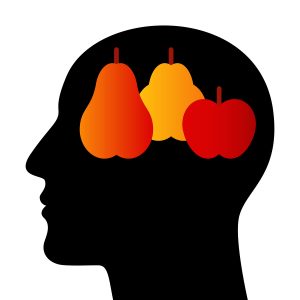If you were to go running there’s a good chance you’ll be yearning for an apple instead of a doughnut afterwards, suggests a recent brain imaging study, and that may be because your brain is pushing you towards water.
Physical activity is one factor that can influence our appetite, possibly by its role in altering our brain signals related to hunger and pleasure. This study focused on bouts of a high-intensity activity: running.
The study was small — 15 lean men — but it may help explain how exercise relates to hunger and overall health. It was published in the American Journal of Clinical Nutrition.
In the study, the men first ran for an hour and then at a later day, they rested for an hour. For each trial, the men had easy access to water.
Ten minutes after they ran or rested, researchers scanned specific areas of the men’s brain as they looked at two dozen food images. In random order, they saw images of high-calorie foods — such as brownies, ice cream, pizza and fried chicken — and low calorie foods, including grapes, apples, lettuce, and carrots. (They also saw two dozen images of non-food items.)
After the men ran and saw the fruit and vegetable images, they had greater activity in an area of the brain known as the primary taste cortex, compared to when the men rested. Activation within this brain region increases with the anticipation of foods, and when consuming foods that we perceive as being pleasant, said the study’s lead author Daniel Crabtree. Previous research has also shown that this region plays a role in the regulation of thirst.
After exercise, they also had relatively lower levels of ghrelin, a hormone known to stimulate hunger.
When the men saw high-calorie food images after they ran, they had relatively less activity in their hippocampus, a brain region that plays a role in triggering our desire for fatty, sweet and other high-calorie foods.
“Our findings indicate that the volunteers found the low-calorie foods more desirable and the high-calorie foods less so following exercise,” said Crabtree, Research Fellow at the University of Aberdeen. “We suggest that this… may be related to thirst.”
There are many complex links between physical activity and appetite and hunger. Other research has suggested that reduced appetite after a high intensity workout is short lived, and more research is needed to determine how moderate exercise affects appetite regulation.





